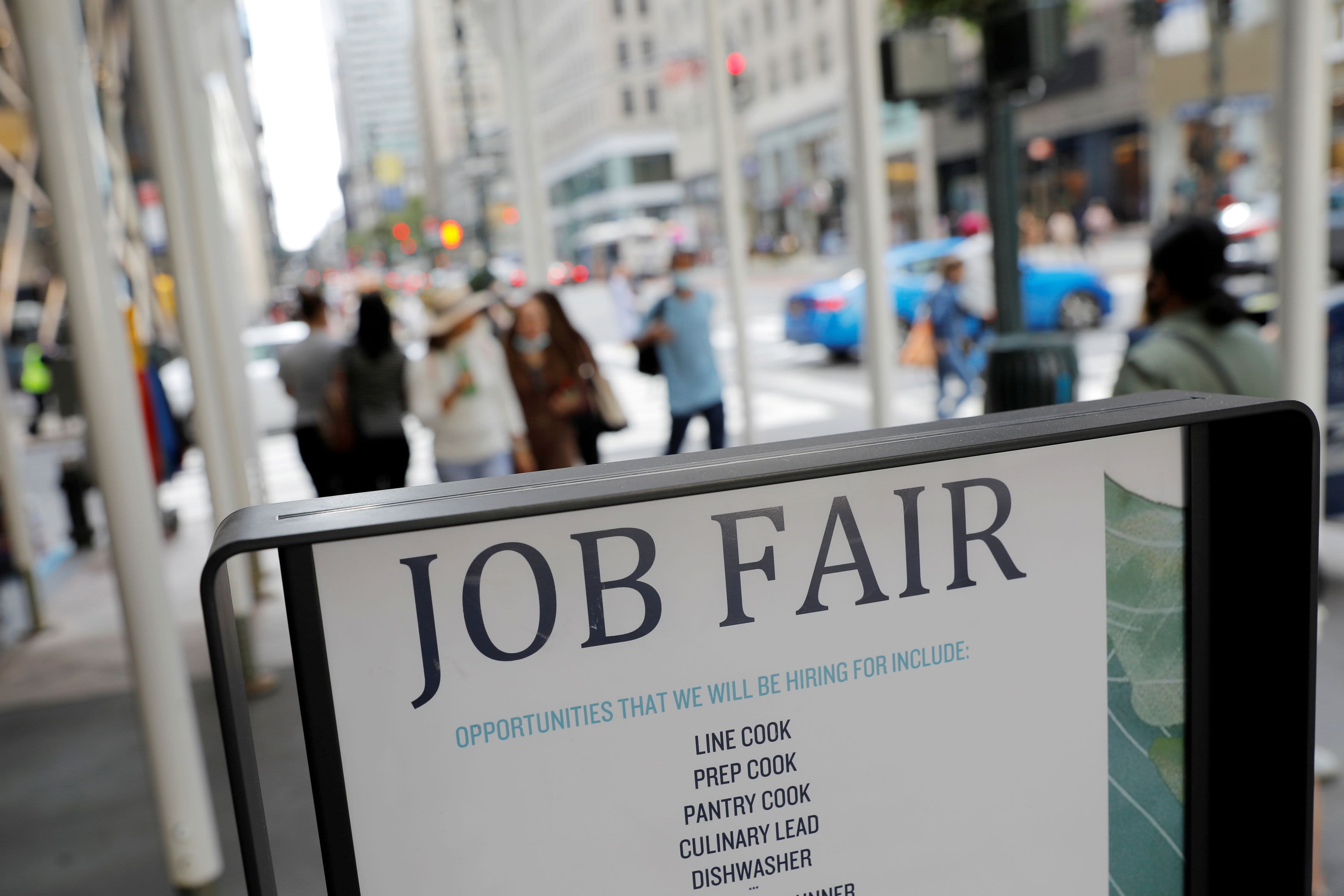
Signage for a job fair is seen on 5th Avenue after the release of the jobs report in New York, September 3, 2021.
Andrew Kelly | Reuters
Consumer confidence hit a 10-year low in November as inflation climbed to the highest levels since the early 1990s, according to a closely watched gauge.
The University of Michigan Consumer Sentiment Index tumbled to 66.8 for November, according to a preliminary reading Friday. The reading was the lowest since November 2011 and well below the Dow Jones estimate of 72.5.
The survey showed consumers expecting still-higher rates of inflation, with the 12-month forecast nudging up to 4.9%.
“Consumer sentiment fell in early November to its lowest level in a decade due to an escalating inflation rate and the growing belief among consumers that no effective policies have yet been developed to reduce the damage from surging inflation,” said Richard Curtin, the survey’s chief economist.
The survey showed 1 in 4 consumers reducing their living standards due to price increases, while half of all families anticipated reduced real income when adjusted for inflation.
“Rising prices for homes, vehicles, and durables were reported more frequently than any other time in more than half a century,” Curtin added.
Job quits hit a new record
The gauge also indicated a low level of belief that policymakers are acting appropriately to handle inflation, which ran at a 6.2% rate for October, according to the consumer price index released Wednesday.
Despite the continued decline in how people feel about the economy, workers again left their jobs in record numbers during September.
In a sign of confidence for the labor market, 4.43 million people quit, part of what some have called “The Great Resignation,” the Labor Department reported Friday. That number topped August’s 4.27 million and bought the quits rate as a percentage of the labor force to 3%, also a new record.
The September total was 1.1 million higher for the same month a year ago, when the quits rate was just 2.3%.
At the industry level, the quits rate for leisure and hospitality rose to 6.4%, a 0.3 percentage point gain from a month ago and owning to a big ump in arts, entertainment and recreation, which surged to 5.7% from 3.2%. Accommodation and food services held steady at 6.6%, the highest of any industry, as is typical.
Hires totaled 6.46 million for the month, a slight decline from August.
That exodus from current positions came as available jobs remained elevated.
The Labor Department in its Job Openings and Labor Turnover Survey said there were 10.44 million employment openings, a relatively modest decline from the 10.63 million in August but still well above the 7.68 million people looking for jobs in September. JOLTS data runs a month behind the department’s widely watched nonfarm payrolls report.
Job openings in September were expected to total 10.46 million, according to FactSet.




